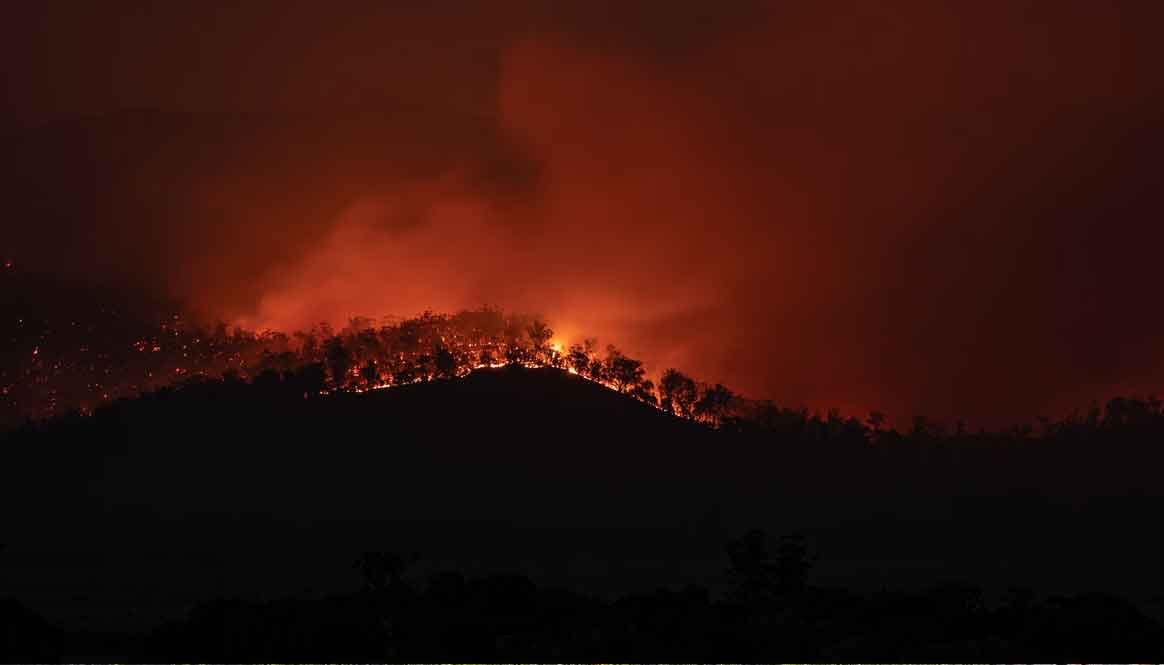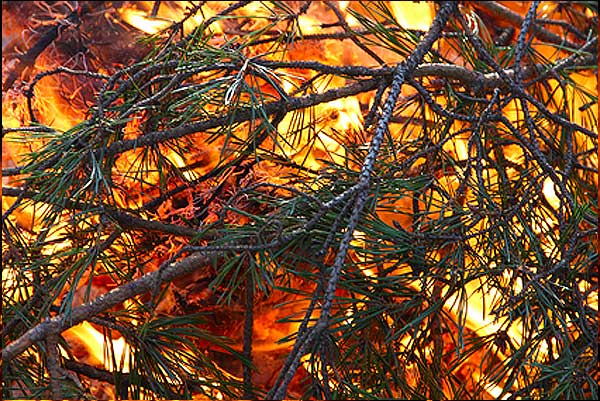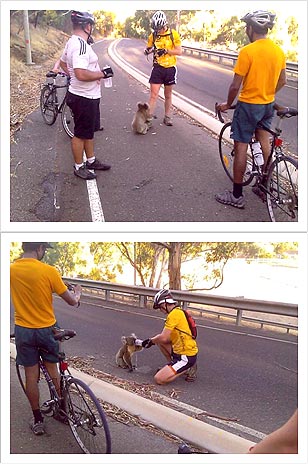Bushfires
The fact is that, for thousands of years, the Australian landscape has burned naturally.
The fact is that, for thousands of years, the Australian landscape has burned naturally.

 The Australian bush needs to burn
The Australian bush needs to burnWild fires are tremendously destructive. Not only do they destroy people’s lives and property, as seen in the terrible 2019/2020 ‘mega-fires’ that affected our wildlife sanctuary, causing us to have to evacuate 250 animals and care for them offsite until the danger had passed.
The debate continues about whether controlled hazard reduction burning should be performed outside of fire-danger seasons to reduce fuel loads and, therefore, the chance of naturally occurring bushfires raging out of control.
The problem is that ‘modern’ techniques for using fire for hazard reduction, although they may strategically protect human habitation, rely on planned burning in short windows so fire is pushed through, in lines, at speed to fit the limited time-window, at a time that suits the humans applying the fire rather than the what suits the bush being burned,
The fact is that, for thousands of years, the Australian landscape has burned naturally as well as systematically by the application of fire by humans.
Today, fires may be caused by lightning, arcing from powerlines, people’s carelessness e.g. by throwing cigarette butts out of car windows and, sadly not infrequently by malicious arson.
There is a strong argument for controlled burning today, but for controlled burning using traditional techniques and timings. These are “cool” burns that don’t damage the tree canopy, and don’t cause destruction of the under- and middle-story of plants. Animals survive, seeds germinate, and fuel loads are reduced.
The alternative is to continue to unnaturally protect the land from bushfires, leading to massive build-up of fuel over time and the increased likelihood of devastating wildfires.
As catastrophic fires ignited in Victoria, Walkabout Wildlife Sanctuary was facing its own bushfire emergency. The 2009 Peats Ridge fire was moving in our direction and was only eventually contained 4.5 km from the park. We started preparing for a possible evacuation on the Saturday and ended up closing the park late-morning on the Sunday for the safety of our visitors and to devote all our time and resources to getting the park fire-ready. We took the difficult decision to start evacuating the captive animals that would not be too traumatised by the move – we just couldn’t take the chance of leaving the full evacuation to the last minute! Captive reptiles and small mammals were moved, and carry cases (and destinations) were prepared for the other captive animals in case we had to evacuate in the middle of the night. We were ready to put our defense plan into action for the free-ranging animals and did as much fire preparation as we could to save the park itself. Luckily the fire didn’t get to us, and it was an excellent practice run for when/if this happens again.
In November 2019, the 3-Mile and Gospers’ Mountain mega-fires were bearing down on us and we were told that we had 3 to 10 days to prepare for the fire front to reach us. We evacuated every one of the almost 200 animals in our care, and all the wild wildlife we could trap to protect. The fires approached inexorably, burning just minutes from our boundary fence for 5 weeks.
We are the first multi-species Australian native animal care sanctuary with large and difficult to relocate animals, to evacuate every animal in our care, plus others we could trap to save, and maintain them all safely for weeks before returning them safely to our sanctuary. We are so proud of our team and our amazing Central Coast local community. This was a mammoth undertaking, too big and complicated to describe it on a page. It will take a book. One day, when we have time, we will write the book so our story can help others.
 A Koala Bushfire Refugee
A Koala Bushfire RefugeeThese pictures, taken by a group of cyclists, show the desperate plight of a koala who himself escaped the flames, but whose wild bush home was destroyed in the bushfires in Victoria in February 2009. The koala grasped a cyclist’s leg, unexpected in a wild koala, showing its desperation. Realising it needed help, the cyclists offered it a drink from a water bottle, which it gratefully accepted.
Although these photos got worldwide attention and elicited help for animals and humans alike, please never offer a koala water from a bottle. Put the water in a dish on the ground so the koala can lap it up.
Koalas do not have an epiglottis to shut off their trachea (airway into the lungs), so if they tilt their head back to drink, some of the liquid will get into their lungs. Even a very small amount of water in the lungs can cause an “aspiration pneumonia” which may be fatal.
Koalas have big teeth and claws and, naturally afraid of humans, even a koala that needs help is likely to bite or scratch out of fear. Never approach a wild animal unless you are trained to do so. Phone your local wildlife rescue organisation. They will get someone out to help the animal.
The pictures on this page are in general email circulation. If they are ‘yours’, please let us know so we can acknowledge them appropriately.
Walkabout Wildlife Sanctuary
1 Darkinjung Road
cnr Peats Ridge Road
Calga, NSW 2250
Australia
(o2) 4375 1100 Australia
+61-2-43751100 International
info@walkaboutpark.com.au
We are OPEN every day
We are NEVER closed
Gates open at 9:30am
Gates close at 5:00pm
[Christmas early close 3pm]
You can buy tickets when you arrive. But if you pre-purchase online, your entry tickets are cheaper. Click here to pre-purchase your tickets online.
